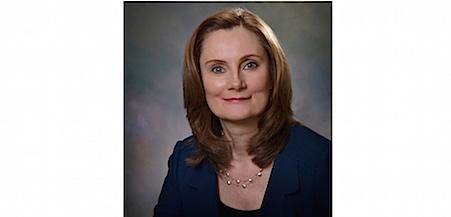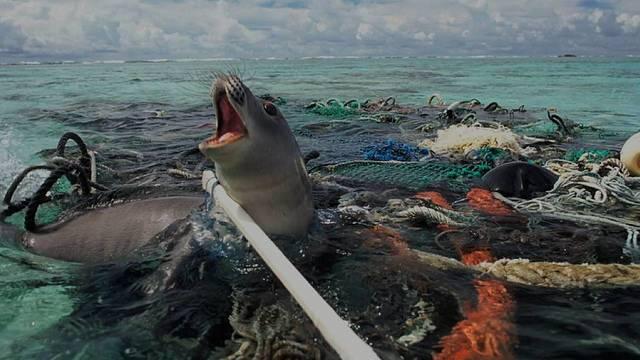Pat Harned guides ethics in business


GSK Makes 750 Million Doses of Pneumonia Vaccine Available Worldwide


The pharmaceutical giant GSK recently announced that Europe’s Committee for Medicinal Products for Human Use (CHMP) has issued a favorable opinion for the company’s Synflorix pneumococcal vaccine. Such approval is a critical first step in allowing GSK to deliver the four-dose vial pneumonia vaccine through Gavi, the international vaccine alliance, across developing countries.
The World Health Organization (WHO) has estimated that pneumonia causes 16 percent of child deaths worldwide, or over 920,000 children in 2015. Simple, low-technology steps can be effective in preventing deaths of pneumonia, but those options are not necessarily available, or there is a lack of awareness, in such countries. Despite improvements in public health and the delivery of more effective vaccines, pneumonia is still the leading killer of children across the world.
But GSK says this version of Synflorix can help address the challenges of delivering such vaccines, and can counter the lack of adequate storage and refrigeration often prevents the distribution of these supplies. To that end, GSK says it will make at least 720 million doses of Synflorix available by the mid-2020s in order to prevent pneumonia from causing the deaths of children in poorer countries.
GSK claims it is one of the first pharmaceutical companies to work with Gavi, and its doses of Synflorix across the globe have helped inoculate at least 100 million children across the globe. A no-refrigeration vaccine will make it more seamless for public health and medical professionals to distribute and use, as this new formula can be effective up to 28 days after opening – compared to six hours for a two-dose vial.
This new development will certainly help GSK develop an even closer relationship with the non-profits and humanitarian aid agencies that have tasked themselves with scaling up vaccination programs in emerging economies. In spring 2016, NGOs including Doctors Without Borders/ Médecins Sans Frontières (MSF) had complained that the price of Synflorix was too high despite what the company said had been aggressive measures to reduce the cost of the vaccine. By September, MSF had welcomed GSK’s decision to lower the price of the vaccine for children who were either refugees or were in the midst of other humanitarian crises. According to Forbes, that price had plunged to just over $3 a dose; MSF had said the price per dose had been as high as $65 when distributed to refugee camps in Greece.
GSK has also had been in the middle of tensions between world governments and large pharmaceutical companies over access to medicines, particularly over the right to license and manufacture them at a discounted rate so they would be affordable for their citizens. Last year GSK stood out amongst its peers by announcing the company would work with governments and find ways to allow them to replicate more of its drugs.
The stand GSK is now taking on its critical pneumonia vaccine will only help build trust between the company and more citizens worldwide. Depending on the pace at which the WHO and local regulators approve this new version of Synflorix, the company says it could be available for distribution as early as next year.
Image credit: Pan American Health Organization/Flickr
This Coffee Company Wants to Pay Farmers a 50 Percent Premium


The global coffee industry has a long history of underpaying and exploiting many of its workers and farmers. The fair trade movement has helped boost the livelihoods of some farmers, but there is still plenty of improvement that could occur in the coffee growing regions of Southeast Asia, Africa and Latin America. One coffee roaster based in New York’s Hudson Valley says it is offering a more aggressive tactic so that farmers can earn fairer wages for their beans.
Levanta Coffee describes itself as a “socially-innovative start-up” that can spark much better economic opportunities for the coffee farmers in Honduras with which it partners. This “social microlot model,” should it take off, will provide farmers 50 percent more revenues thanmarket rates currently offer. The social enterprise will launch a crowdfunding on Kickstarter later this month with the goal of raising $35,000 to make this project a reality. Participants in this campaign, along with visitors to the Levanta’s site, will soon learn the stories about the hardships many of these Honduran farmers, who on average clear $2,000 to $4,000 annually, constantly endure.
Levanta joins a long list of companies and non-profits that have attempted to make the coffee industry much more sustainable and more importantly, humane. The strategies are all over the map.
For example, San Francisco’s Blue Bottle Coffee pitched a $16 cup of java sourced from a rare coffee varietal in Yemen in order to revive the country’s long, proud, but now struggling coffee sector. A few years ago, Green Mountain Coffee Roasters launched a biochar project in an attempt to reduce climate change impacts, provide clean cooking fuel and nudge Rwanda’s coffee industry towards a circular economy system. Even 7-Eleven sells a Nicaraguan fair trade brew at many of its corner stores. And some non-profits, such as Cool Effect, want to make sure struggling Peruvian coffee producing communities survive with its carbon credit program.
Levanta’s Kickstarter campaign starts July 18.
Image credit: CIDSE/Flickr
Gap Expands Paid Internship Program


Gap Inc. has recently announced that it is doubling the size of its paid internship program. Last month, the retailer claimed 1,200 teenagers and young adults between the ages of 16 and 24 in North America and the United Kingdom will work at selected stores this summer. With the program expanding to the Miami and Vancouver areas this year, at least 300 Gap, Old Navy and Banana Republic stores are now participating in this 10-week program.
This news may puzzle workers’ rights advocates and critics of unpaid internships, who are quick to remind us that minimum wage laws exist in the first place. Nevertheless, shifts in consumers’ shopping habits are making even retail jobs more difficult to land. And in other sectors, the role of interns has come under closer scrutiny in recent years. The 2013 death of Moritz Erhardt after working a 72-hour shift for Bank of America Merrill Lynch caused an even louder outcry over what opponents of this working system say are rife with abuse, whether or not these workers are paid. Many banks responded to Erhardt’s passing with clearer internship policies. Goldman Sachs announced that interns’ days would be capped at 17 hours.
One criticism of unpaid internships is that they are often the privilege of kids from wealthier families which have the means to support their children while they work for free at well-known companies. A 2010 study, however, cast doubt on that assumption, and concluded that students and workers from lower-income families often found themselves more likely to work in an unpaid internship. But to muddy the internship waters even more, three surveys conducted earlier this decade suggested that these unpaid job assignments did not necessarily create an advantage for young workers once they were ready to enter the job market.
Many college students and younger workers, however, feel compelled to sign up for a paid or even unpaid internship in order to stand out in a hyper-competitive job market. And at the same time, many employers are not going to refuse low-cost or volunteer labor. This problem is endemic within the sustainable business world - as anybody in this space would know, judging by the number of emails that can accumulate in one’s inbox with the suggestion “let’s collaborate!” (collaborate the dog whistle expression that means, “can you work for free?).
Companies such as Gap are wise to pay their interns, as unpaid positions can turn into a slippery slope for employers in the event someone becomes disgruntled about his employment situation. According to the Department of Labor, there are six criteria allowing a for-profit company to bring on unpaid labor. Those exemptions include training akin to what would be received in an educational environment; work experience that benefits the intern professionally; an intern may not displace paid employees; and that worker is not entitled to a job at the end of the internship period (in order to counter any promise of a future job in exchange for unpaid labor). Despite those vague parameters, employers should still proceed with caution. “It’s fair to say most private-sector employers who employ volunteers are violating the law,” said David Yamada, a Suffolk University law professor in an interview with ProPublica.
Programs such as the one Gap operates are a more structured and productive way to train potential employees while improving the company’s reputation. Gap claims workers participating in this plan tend to work well with colleagues and if they are hired, stay with the company twice as long as other employees. In addition, Gap says it partners with local non-profits so that these participants can benefit from resume writing skills, time management and leadership training. In total, the company says it expects 10,000 young workers to benefit from this program by 2020.
Image credit: Mike Mozart/Flickr
What You Need to Know About Community Choice and Solar Power


The advent of low cost solar power is already upending the conventional business model for utility-scale electricity generation, and the Community Choice program in California provides a strong hint that far more changes are in store. Eight Community Choice agencies now operate across the state, providing analysts with an ample real-life data platform for assessing the results.
The takeaway: by providing for local control over utility decisions, Community Choice can stimulate a significant amount of local economic activity. However, policy makers need to consider a wide variety of factors -- including the impact on small scale, distributed solar -- before taking the plunge.
What is community choice?
The concept behind community choice is relatively simple -- and quite alluring. Community choice is basically an aggregation policy that enables customers to determine their electricity contracts as a group. The utility continues to provide basic operations.
In the context of today's renewable energy landscape, the implications are enormous. Essentially, community choice programs put millions in existing revenue under the control of local authorities.
The result is a more holistic policymaking environment in which local job creation, preference for renewable power, and rate-making decisions are left to self-organized groups instead of utilities or public utilities commissions. This is a big deal because smaller groups have the ability to act more nimbly than big utility operators. Utilities with their decades-long power contracts and enormous grids to maintain are obviously reluctant to let anyone opt out of coverage. And public utilities commissions, which control the rates utilities are allowed to charge for power, fear spikes in costs.
Local groups with local interests suddenly become a more powerful force -- an important counterbalance for consolidation in the electricity market -- and the ripple effect can reach nationally and even globally.
That effect is amply illustrated in Illinois, which adopted a community choice policy in 2009. A 2014 report on the policy's impact in Chicago caught the Triple Pundit eye:
...Chicago officials came up with a plan to eliminate coal from the city’s mix and include more wind power, specifically from Illinois wind farms.The initial response from the energy supplier, Integrys Energy Services, basically came down to, “No,” but Chicago’s 900,000-strong aggregated customers provided the supplier with a strong motivation to find a way to work with the city.
Another factor in favor of community choice is the potential for securing long term reliability and rate predictability over quick profits for investor-owned utilities.
In 2015 the National Association of State Legislatures summarized the potential benefits of community choice programs:
States may consider aggregation to reduce electricity costs, provide power from local sources or purchase energy from renewable sources. Massachusetts, for example, included aggregation in the state's electric utility restructuring policy to lower electricity costs for consumers. Ohio however, advertises both cost savings and profit-sharing potential to prospective customers, while New York is currently establishing aggregation as a method of procuring cost-effective local renewable energy.
With all these benefits, the question is why only a handful of states currently have community-choice-enabling legislation on the books, with California, New Jersey and Rhode Island joining the four mentioned above.One obstacle to widespread adoption is the lack of real-life data on the impacts of community choice programs. Previously, policy makers focused mainly on rate setting. With community choice, the task of assessing policy is much more complex, because local control can motivate investment in local power sources that boosts local businesses and their employees.
Policy makers need concrete information to help assess the interplay between rate-setting, local power sourcing and local job creation, and the California experience provides just that.
California solar power and community choice
California's Community Choice program was launched by state law in 2002. Eight Community Choice agencies are already up and running in the state, and more are in the planning phases.To assess the impact of the program on local economies, the community choice advocacy organization Center for Climate Protection commissioned a study from the independent consulting firm Fosterra.
Just released under the title, "Community Choice Energy: What Is the Economic Impact of Local Renewable Power Purchasing?," the study looks at San Joaquin, Fresno, and Tulare Counties in the San Joaquin Valley.
The key takeaway is that "significant local economic benefit is directly correlated with local renewable energy investment."
Fosterra's most conservative estimate is that the three counties could add 8,400 jobs and generate $845 million in economic activity from 2019 to 2024, based on the assumption that only 10 percent of the electricity supply in the region would come from locally-sourced solar.
The study also included a mid-level scenario and a "most optimistic" scenario of 33 percent solar. At the 33 percent mark, job creation could hit 27,600 and the estimated economic benefit would top $2 billion.
Even the "optimistic" scenario is somewhat conservative, because the study only considers job creation and economic activity directly related to the development of new, large-scale solar installations.
The report does not include other potential growth sectors that are intimately connected to solar development, including (but not limited to) energy efficiency, energy storage and electric vehicle charging.
Look before you leap
As encouraging as the study is, Fosterra advises that rate making is a complex process under any conditions, and the renewable energy field adds another layer of considerations.
One key issue, for example, is the tension between centralized, utility scale solar projects and small scale projects at individual buildings. The advent of low cost, small scale energy storage technology enables more customers to withdraw from the grid or at least reduce their participation, and that variable will impact rate making decisions.
Another consideration is the potential for lower rates from non-local renewable energy sources, such as remote wind farms or concentrating solar power plants. Policy makers would have to model the potential impact of low rates on economic activity compared to the activity stimulated by local development projects.
Fosterra does note that remote sourcing may be less attractive because it has broader implications for a comprehensive, regional sustainability policy. That includes the potential for environmental harm at large scale, remote sites as well as energy loss and waste associated with long distance transmission.
Be that as it may, as evidence mounts in favor of the benefits of community choice, Fosterra notes a set of factors that could make further expansion more difficult. For example, utilities may adopt policies that make it more expensive to launch and operate a community choice program.
Utilities may also offer a stronger slate of renewable energy programs to diminish the incentive for stakeholders to adopt community choice programs.
As Fosterra notes, it is also important to keep in mind that conditions in the San Joaquin Valley are "ideal for varying scales of solar development and for developing solar power at very competitive rates." Solar conditions range widely across the U.S., and policy makers in different regions need to take that into account.
In sum, though the new study doesn't make a "case closed" argument for universal community choice across the U.S., it does provide advocates with a strong argument for including local, large scale solar development in the case for expanding the availability of community choice programs.
Considering the growing interest in small scale and micro wind development, the new study may also motivate policy makers to model the potential benefits of community choice programs in regions with ample wind resources.
Even if community choice does not expand to more states in the near future, the potential for near term growth is enormous -- and it already looks like community choice is here to stay.
Community choice participation in the seven active states already includes more than 1,500 cities with 5 percent of the U.S. population, and those seven states collectively account for approximately 30 percent of the U.S. electricity market.
For more information on community choice visit the Clean Power Exchange.
Image: via Center for Climate Protection (page 33).
3 Game-Changing Impact Investment Firms


By Kenny Kline
Impact investing, though still relatively new, is an exciting and profitable way to enter the business of sustainability. For those not in the know, a recent report done by Cambridge Associates defines impact investments as “investments made into companies, organizations, and funds with the intention to generate social and environmental impact alongside a financial return.”
As many individuals struggle to balance profit and responsibility when it comes to investment, impact investment firms remain at the forefront, innovating ways to advance economically with due respect to the environment and those within it.
With that in mind, here are three impact investment firms that I believe stand as strong examples of how profitable enterprise can be merged successfully with social good.
Vital Capital Fund
Vital Capital is a $350 million dollar private equity fund based in Western Europe. The firm mostly works in sub-Saharan Africa, investing in communities while delivering significant returns to investors. Vital wants to show that impact investment is not a matter of compromise: you can make very real positive changes to lives of local populations while still generating appealing and risk-adjusted returns for its investors. In other words, doing good can be profitable.
Vital works in high-demand areas like energy, education, housing, small business, agriculture, and water. In this way, the firm tries to address the foundational elements in creating healthy communities in both rural and urban contexts.
Recently, the company exited two investments in Angola successfully: an electricity transmission project and a water accessibility project. Both were finished within budget and time parameters, and the projects saw an internal rate of return of 24 percent.
Community Reinvestment Fund
With over $250 million dollars in assets and projects in 47 states, this Minneapolis-based firm is developing impressive momentum in the impact investment world. The Community Reinvestment Fund (CRF) works with local lenders to offer capital for projects aimed at community development. While focusing on small business loans (with an emphasis on stimulating business growth, improving energy efficiency, and on-boarding staff), CRF also invests in other community institutions like schools, community facilities, day care centers, and housing projects.
In 2015, CRF was chosen by Goldman Sachs’ foundation for a long-term, low interest loan of $5 million to be used for small business loans around the country. The loans are directed at businesses with over two years of experience, and will seek to serve minority-owned businesses in lower-income neighborhoods.
Gray Ghost Ventures
Gray Ghost is headquartered in the USA and Canada. It offers capital solutions to entrepreneurs working in emerging markets in disadvantaged communities—mostly in Africa and South Asia. The company has invested over $100 million in various social initiatives, with a strong emphasis on empowerment through technology.
Gray Ghost’s upcoming investments will focus exclusively on businesses that use mobile technologies to deliver products and services, reflecting the wider, public fascination with mobile solutions, from package delivery to home security. Although the firm has about 400 companies in its pipeline, it only invests in about three or four per year—this allows Gray Ghost to give higher quality attention to its portfolio.
As the impact investment space continues to grow, companies like these and others represent strong roadmaps for those following in their footsteps, as well as proof of concept that firms can both be profitable and concerned with social good.
Kenny Kline is a serial entrepreneur. His ventures are primarily focused on media and digital marketing. When not in front of his computer, he can be found beekeeping, knitting, and being as Brooklyn as humanly possible.
Mr. Trump Goes to Hamburg -- and Ditches International Collaboration


If there is a snapshot to summarize just how the U.S. fared at this weekend's meeting of the world's most powerful heads of state, it would be Ivanka Trump sitting in for her father during a key meeting on world economic issues. Sandwiched between presidents and prime ministers, the 35-year-old unpaid White House aide would only say that her father "had to step out" and that she was sitting in on his behalf.
But according to other observers, President Trump had actually left the meeting hours beforehand when he realized that the G20, usually symbolized by tense but forgiving dialogue, was not going his way. In fact, when it came to things like climate change and the value of multilateral partnerships, Trump may have been at the table, but his focus and his aim, critics noted, were somewhere else.
"Trump seems to regard Germany and other European countries more as economic competitors than as strategic allies," Nicholas Burns, a former state department official told the Financial Times. Burns should know: He served as under secretary for the George W. Bush administration and as NATO ambassador. "That is a great mistake to make about our most important friends in the world."
To be fair, there were other forces at play this year as well. There were 19 leaders who were determined to show the world that the Paris Accord was "irreversible," and they would continue to move ahead. There were personalities and personal agendas to be scored: UK Prime Minister Theresa May, who needs an economic win (like a trade deal with the U.S.) in order to correct her demoralizing loss at the "Brexit" polls in June; firebrand French President Emmanuel Macron, who holds no patience for Trumpian economics or protectionist politics; and German Chancellor Angela Merkel, the host of the summit and by many assessments, the new defacto, if reluctant, head of the free world.
With Trump's unwillingness to continue U.S. engagement on the Paris Accord, the Trans-Pacific Partnership, the North American Trade Agreement and multilateral cooperation in general, the world, says Capital Financial International is now looking for a new voice to lead cooperation in fighting its greatest battles: climate change and ensuring economic sustainability.
"Chancellor Merkel has repeatedly stated that she will insist on speaking about climate change and development issues," CFI said in this week's newsletter. At the top of that list is Africa's growing population and the need to find ways to shore up the need for international financial aid for underdeveloped economies.
That's where Ivanka Trump came in this weekend. Sliding into her father's chair, she put forth her idea for how to address Africa's unsustainable economy: women entrepreneurs. Ms. Trump has never been shy when it comes to supporting women's rights, even though her principled efforts are often overshadowed in the press by her father's more bombastic headlines. But this weekend she had the podium and the opportunity to promote a World Bank Organization she believes in: The Women Entrepreneurs Finance Initiative. The program would be directed at empowering impoverished women in Africa through loans and training and boosting their opportunities to become successful entrepreneurs.
With Ms. Trump's help, the program has already raised more than $325 million from supporting countries, including $50 million from the U.S. The rest of the supporters largely comprise those nations sitting at the table, including Canada, the UK, Saudi Arabia, the Netherlands, Japan and China. The World Bank is hoping to eventually raise that funding total to $1 billion.
The concept behind the program isn't exactly new. A variety of small and large private and public-private partnerships, like Hope International, Kiva and Meketa currently help bring needed microloans and training to aspiring entrepreneurs in Africa. What is often needed, though, is the larger capital and the clout to ensure that banks that sign up do in fact, loan funds that have been promised.
Still, there was a fair amount of criticism against both President Trump and his daughter for the seat switch, a move it seems, also allowed Donald Trump to do what he does best, push for advantageous one-on-one alliances while most of the rest of the G20 carried on multilaterally. His absence didn't help promote the U.S.' standing at the G20 (some critics now deridingly referred to the G19 +1,) or the growing perspective that America, once a force behind multilateral partnerships and 'get-er-done' initiatives, is fading from the force just when the planet and world alliances need it most.
Flickr images: Marco Verch; TREEAID
19 U.S. Aquariums Join Forces to Fight Plastic Water Pollution


According to a fall 2016 study led by the World Economic Forum, 32 percent of the 78 million tons of plastic packaging generated annually across the globe ends up in waterways and storm drains where it eventually flows into oceans. That rate is the equivalent of a dump truck pouring a load of plastic into the oceans every minute of every day. At that rate, environmentalists have suggested there will be more plastic than fish in the world’s oceans by 2050; meanwhile up to $120 billion of value is thrown away.
To that end, 19 aquariums across the U.S. say they are joining forces to raise awareness and push society into finding innovative alternatives to single-use plastics.
The “In Our Hands” initiative aims to educate consumers about a wide range of tactics they can adopt to stop the growth in plastic waste that has occurred worldwide since the early 1960s. Some of the answers include using reusable plastic bottles, taking tote bags on shopping errands and refusing to use disposable straws (face it, you don’t need a straw unless you are under 8 years old or over 90). [Ed note: lipstick-wearers may beg to differ!]
Some of the aquariums participating are the most well-known and respected institutions within this field, including the National Aquarium in Baltimore, Shedd Aquarium in Chicago, Boston’s New England Aquarium and the Monterey Bay Aquarium on California’s Central Coast. These aquariums all belong to the Aquarium Conservation Partnership (ACP), the coalition responsible for launching this campaign. All ACP members have eliminated plastic straws and single-use plastic bags from their restaurants and stores; by 2020, they have promised to sharply reduce or even eliminate all plastic beverage bottles while displaying alternatives to single-use plastics within their premises.
While the ongoing discussion over ocean pollution has largely focused on the Pacific Garbage Patch and ideas that could neutralize the problem, other regions of the world are becoming overwhelmed by plastic pollution as well. One of the them is the wider Great Lakes area, which has increasingly become the recipient of both microplastics and fragments of single-use plastic items. A study issued last fall estimated that up to 22 million pounds of plastic waste are entering the five Great Lakes annually; half of that amount has become washed up in Lake Michigan. That amount is equal to 100 Olympic-sized swimming pools becoming filled with plastic bottles year after year.
As aquariums are popular places for families and school field trip visits, the hope of ACP members is that the message about plastic’s devastating impact on marine environments can send a strong message to children and adults.
“The public trusts aquariums to do what’s right for the health of the ocean and for ocean wildlife,” said Julie Packard, executive director of the Monterey Bay Aquarium in a public statement. “We’re just beginning to understand the full impacts of ocean plastic pollution on ecosystems, marine life and human health. But we already know enough to say that now is the time to act.”
The Monterey Bay Aquarium is one example of how a well-respected institution can find success in taking on a more activist role. The 33-year-old aquarium on Monterey’s Cannery Row supported the disposable plastic bag ban in California; that law was approved by an almost six-point margin, despite the fact that a plastic bag lobbying group succeeded in landing a similar proposition on the ballot in an attempt to confuse voters - which California voters in turn refused to pass.
Image credit: Nels Israelson/Flickr
Volvo Launching 5 New All-Electric Car Models in 2019


Volvo Car Group announced yesterday that in a few years, every model rolling off the automakers’ assembly line will at a minimum be partly powered by electric battery system. The Sweden-based luxury car manufacturer, owned by China’s Zhejiang Geely Holding Group, said it would roll out five new all electric-cars between 2019 and 2021. The company will also offer plug-in hybrid vehicle (PHEV) and mild hybrid choices to its customers. Two of the new all-electric models will be branded as Polestar, a new line of electric cars the Swedish automaker has recently spun off.
In recent years, the company has been polishing its sustainability credentials; in December 2015, Volvo said it had rescinded its membership in a major mining trade organization after that group continued to lobby against the Environmental Protection Agency’s Clean Power Plan. Less than two months ago, Volvo mentioned that the company would slowly stop manufacturing diesel-powered cars.
“This is a clear commitment towards reducing our carbon footprint as well as contributing to a better air quality in our cities,” said Volvo’s President and CEO Håkan Samuelsson in a video explaining the strategy. “We are convinced that the future of Volvo is electric, and that’s why we’ve stated the bold commitment.”
Volvo’s phasing out of cars with pure internal combustion engine (ICE) will drive the company’s publicly stated goal of selling 1 million electrified cars by 2025.
Since Geely acquired Volvo from Ford in 2010, the company has accelerated investment in new automobile models and assembly plants in an attempt to compete with other luxury car brands such as BMW and Mercedes-Benz. This shift is a huge risk for Volvo, as most buyers of luxury cars (true of most automobile purchasers in general) make such purchasing decisions based on design and performance.
But the upstart high-end automaker Tesla has proven that electric vehicles can develop fierce customer loyalty and a devoted fan following. Furthermore, as these cars’ ranges improve and additional drivers experience the impressive torque with the quiet ride typical of electric vehicles – without the annoying maintenance schedule or need to fill up the tank at a gas station - more consumers will gravitate to these vehicles.
To that end, Volvo is bullish on the future of electric cars, and will be seen as a trendsetter by the global automotive press, which currently focuses most of its electric car discussions on Tesla. And investors are starting to line up behind Volvo’s vision, as Reuters has pointed out that in recent months the company has raised almost $600 million from Swedish institutional investors alone.
Fans of electric cars are quick to tout the world’s environment as the big winner. That may be true, but for many workers within the automotive sector who fear that automation will eliminate their jobs, another other huge beneficiary of this announcement is the global supply chain. Bloomberg’s Chris Bryant highlighted the fact that cars that are powered by both fossil fuels and electric motors require more parts and more technology. The result is several years of robust business for suppliers and technology companies.
But as is the case with the boom-and-bust cycles that have long sidetracked automakers, any boost in hybrid sales could fizzle by early next decade. Sure, hybrid cars are a viable option for consumers who still succumb to “range anxiety,” and see such cars as a way to prove their sustainability chops. But a report the investment bank UBS published earlier this year suggests that electric cars could reach cost parity with gasoline-powered peers as early as next year.
Volvo’s attempt to differentiate itself from its competitors may not last long. BMW, for example, is expected to release its updated all-electric i3 this fall. And if Tesla meets expectations with the much-anticipated roll out of its Model 3, watch for the other automakers to scramble as more drivers grasp the benefits of driving an all-electric vehicle.
Image credit: Volvo
Craft Chain Hobby Lobby Fined $3 Million for Smuggling Thousands of Iraqi Antiquities


Earlier this week, the U.S. Attorney’s Office for the Eastern District of New York fined the arts and crafts chain Hobby Lobby $3 million for its role in the smuggling of cuneiform tablets, along with clay tokens and sealings (often called bullae by archeologists) from Iraq. The U.S. federal government had found that these artifacts had been smuggled to the U.S. via Israel and the United Arab Emirates. Packages containing the artifacts had been shipped from the Middle East to Hobby Lobby’s headquarters in Oklahoma City, as well as to two of the company’s affiliates. Shipping labels affixed to those packages described the tablets as “samples.” All those items have since been forfeited by the company.
In a public statement, Hobby Lobby and its CEO, Steve Green, did their best to walk away from any accountability for the incident. “We should have exercised more oversight and carefully questioned how the acquisitions were handled,” said Green, “We have accepted responsibility and learned a great deal.”
Green is currently leading the construction of a $500 million Museum of the Bible in Washington, DC.
The privately-held $4 billion company claimed that it was “new to the world” of acquiring antiquities, and it “did not fully appreciate the complexities of the acquisitions process.” The result, insisted the company, were “some regrettable mistakes.” Hobby Lobby said that it had cooperated with the federal government’s investigation, and that the company never directly purchased antiquities from dealers in Iraq or from anyone who has ties to the country. In assuring the public that its passion for the Bible is in part what drives the company to preserve ancient items of cultural and historical importance, the company said the goals of such acquisitions were to provide access to scholars, students and the public.
Sadly, the export of antiquities from countries including Syria, Iraq and Afghanistan is nothing new. Visit an antique shop in the UAE’s Abu Dhabi, Dubai or Sharjah, and there is a good chance that many of the items for sale are from Afghanistan. When I visited the popular Qbara restaurant at Dubai’s Egyptian-themed Wafi Mall two years ago, a staff member gave me a guided tour of the space and told me how much of the interiors and artifacts on display had been bought in bulk in Afghanistan. Knowingly or unwittingly, Hobby Lobby is just one more recipient of such antiquities due to another society that has long found itself in disarray.
But Hobby Lobby’s antiquities snafu is more than an awkward public relations miscue for three reasons. First, being caught red-handed with these items plunks Hobby Lobby in fine company with Islamic State (often called ISIS, ISIL or Daesh, which dates back to 2003); the jihadist group has reaped millions of dollars (some say billions) from the selling of antiquities its minions have stolen or excavated across Syria and Iraq. Once they are sold on the black market, and most likely sold again and again, the likelihood is high that they will never return to their provenance.
In addition, the company has made it clear that Christianity is important to the mission of the company. Hobby Lobby has been in the middle of several high-profile legal cases this decade, including Burwell v. Hobby Lobby Stores. In that case, the U.S. Supreme Court decided that closely held corporations can exclude certain medical services such as contraception from their medical plans if they have a religious objection. Now the company finds itself jeered by taunts of Schadenfreude. “Thou Shalt Not Steal” has been a common refrain heard from columnists and bloggers since news accounts of the company’s ties to smuggling antiquities was first disclosed on The Daily Beast. True, the company could argue it technically and legally did not steal anything – but the optics are unflattering.
Third, for a company that has been accumulating such artifacts for almost a decade (2009 according to the U.S. Attorney’s Office), the “new to the world” claim is a stretch. A cultural property law expert had reportedly warned the company that any accumulation of such objects could land the company in hot water with U.S. Customs and Border Protection. In addition, the company’s president and a consultant had traveled to the UAE to inspect cuneiform tablets and other items. Despite those warnings, the company agreed to purchase over 5,500 artifacts for $1.6 million – but Hobby Lobby’s representatives had not met with the dealer, nor had they communicated with the antiquities’ seller. Furthermore, the company wired funds for payment not to the dealer, but to seven different personal bank accounts. A $4 billion company and its legal team, quite simply, should have known better.
Image credit: U.S. Department of Justice